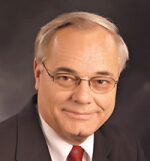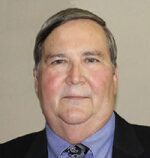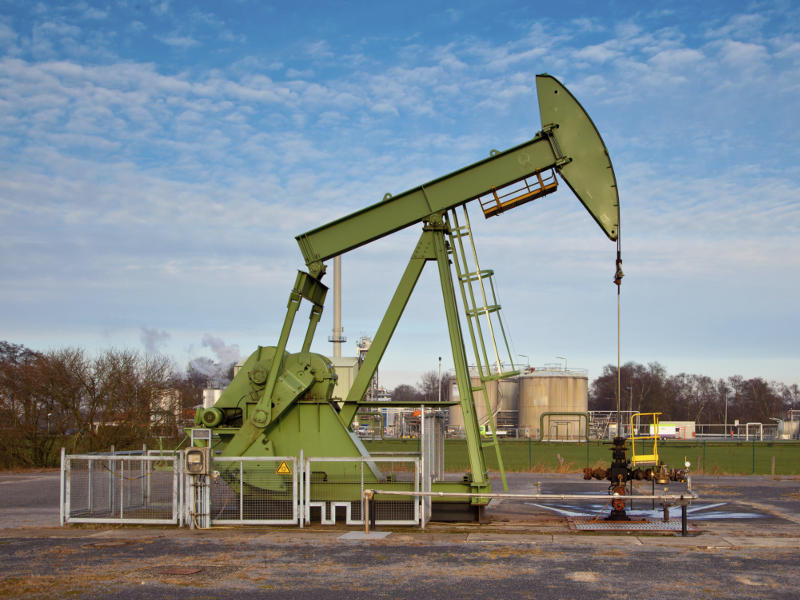
John Bearden has published 19 papers and holds 16 patents on the topic of electric submersible pumps (ESPs). He has worked on the SPE task groups that developed Recommended Practices on ESPs, authored the ESP chapter in the new edition of the Petroleum Engineering Handbook, and served on the committee that developed the ISO Standard for ESPs.
After earning BS and MS degrees in mechanical engineering from Texas A&M University, Bearden joined the Borg-Warner Ingersoll Research Center, which was Centrilift’s corporate research facility. While there, he worked on various projects studying the effects of gas on downhole pumps, which resulted in the development of Centrilift’s Rotary Gas Separator prototype. He transferred to Centrilift’s Byron-Jackson Pump Department in 1976 as a project engineer and, after Baker Hughes acquired Centrilift, he worked his way up to the position of director of R&D systems engineering for Baker Hughes’ artificial lift product line. He was presented the Baker Hughes Lifetime Technology Achievement Award in 2007, and retired in 2015.
His master’s thesis was on the subject of turbomachinery and fluid dynamics, and his whole career involved the design, development, and application of ESP components and systems. “A career in artificial lift was good to me,” he said. “I learned new technologies and new application solutions on a consistent basis. That learning came from others in the company, customer technologists, and even competitors.”
Bearden credits his mentors for giving him the advice and support he needed to be successful.
“Find a mentor or mentors as you start pursuing your professional career,” he recommends. “They can help guide you, but it is up to you to determine your course. I was fortunate to have several mentors during my career, and the one that helped guide me the most was John Tuzson, my manager at the Borg-Warner Research Center,” who wrote the book Centrifugal Pump Design.

Mark Mahoney has received industry recognition for his work in developing improvements to rod pumping equipment to address problems such as sand production and high gas/oil ratios. Mahoney was involved in the pioneer work of placing rod pumps in the deviated section of horizontal wells, and he helped develop new designs and strategies for rod pumping in deviated wellbores.
Author/coauthor of numerous SPE papers and coauthor of three patents, Mahoney served on the API Committee for Standards and Recommended Practices for Sucker Rod Pumps for 10 years. He serves on the steering committees for the biannual Middle East Artificial Lift Forum, an annual international beam-pumping workshop held in Texas, and the biannual SPE Enhanced Oil Recovery/Improved Oil Recovery Conference in Oman. He is a peer review editor for the SPE Production & Operations journal and the SPE Canadian Journal of Petroleum Technology, and is a master class instructor for SPE.
Mahoney worked at Harbison-Fischer for more than 26 years in research and development of new products, reverse engineering and redesign of sucker rod pumps (SRP), SRP system designs, failure analysis, and training on SRP systems. He is an ISO/API Q1 trained internal auditor, and he developed new quality processes, work instructions, and procedures for both internal and external customers.
Mahoney also worked as the senior artificial lift consultant for the Production Optimization Group at Lufkin Industries, and held the positions of senior artificial lift projects manager and Middle East operations manager for Lufkin in Oman. Mahoney recently retired from Occidental Petroleum, where he worked as the artificial lift advisor for 3 years.
“My advice is to go and get as much field experience as you can, especially visiting the teardown of pumps/equipment and witnessing installation and pulls of pumps, gas lift, and plunger lift equipment,” he said. “Visit manufacturers as well. Learn about how the equipment is made and the materials that are used so you better understand failures. Last but not least, find someone that is good at failure analysis and make good friends with him or her.”

James McCoy graduated from the University of Oklahoma with a BS degree in petroleum engineering and from Penn State University with an MS degree in petroleum and natural gas engineering. He worked for a consulting firm and a major oil company, purchasing and operating oil and gas properties. In 1962 he acquired Echometer Company and expanded the acoustic liquid level instrument’s capabilities into a full-fledged well analyzer system that is used worldwide to measure and improve the efficiency of producing oil wells. He has received industry recognition for his dedication and passion for teaching others how to use downhole pressure data and inflow performance to maximize well production.
McCoy is active in SPE, having authored or coauthored more than 30 SPE papers, the first being SPE 337 titled “Analyzing Well Performance.” He holds numerous artificial lift patents and was instrumental in establishing the McCoy School of Engineering at Midwestern State University in Wichita Falls, Texas.
“The artificial lift industry has been a great way to support myself and my family,” he said. “The job has been both in the office and in the field, which I like. The industry has a lot of challenges, and I have really enjoyed working on those challenges—the varied challenges have been fun. I recommend the artificial lift industry to young people looking for a profession that is interesting and exciting. I have been privileged to work with such a great group of people.”

Sid Smith Sr. earned a BS degree in petroleum engineering from the University of Louisiana in Lafayette in 1958 and went to work for Camco, where he coauthored Camco’s Gas Lift Manual with H.W. Winkler. In 1968, he joined Conoco as a gas lift expert and held positions in production engineering, operations, and management in Houston, Dubai, and Indonesia.
After taking early retirement from Conoco in 1993, Smith chaired the SPE Gulf Coast Section’s Community Services Committee while consulting part-time for Camco and Shell. With Shell, he taught gas lift schools in The Hague, Gabon, Nigeria, Brunei, and Oman while assisting with the deployment and use of WinGLUE, Shell’s patented gas lift surveillance software. He is currently working as a part-time consultant for Appsmiths, assisting with gas lift software development and services in Houston. For the past 10 years, he has been executive director of Urban Outreach Inc., a faith-based nonprofit serving inner-city families in Houston.
Smith said engineers can remain in production engineering on the technical ladder throughout their career, rather than climb the management ladder. “The key thing about being connected in artificial lift is, artificial lift can be and usually is utilized throughout the reservoir life cycle. So the opportunity for gainful employment is there even in times of low oil and gas prices. I am still as busy as I was before oil prices dropped below USD 100 a barrel.”

